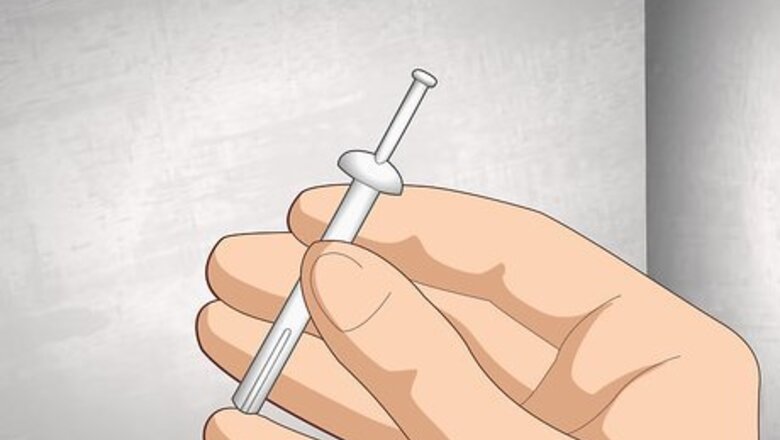
views
- Using a hammer drill, drill a hole and insert a hammer-set anchor nail into that hole; tap the nail into place with a standard hammer.
- Nail a sturdy masonry nail into concrete by repeatedly hitting it with a mash hammer—strike carefully and directly to avoid bending the nail.
- For safety, wear a face mask and safety glasses and gently fasten masonry nails into the wall before you begin hammering with full force.
Anchor Nails
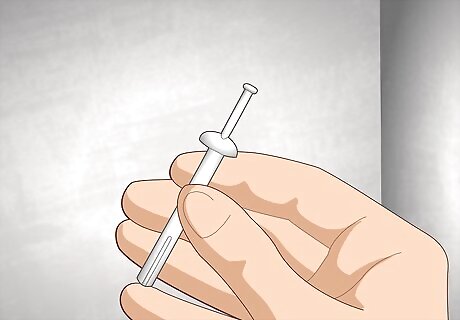
Choose hammer-set anchor nails for concrete walls. Hammer-set anchor nails are what’s known as mechanical drive anchors. They consist of a wider section at the bottom that’s designed to expand and a thinner top section that looks like a standard nail. They’re tough enough to be hammered into concrete, but you first need to drill a guide hole into the wall. Look for hammer-set anchor nails at your local hardware or home improvement store. You can also order hammer-set anchor nails online.
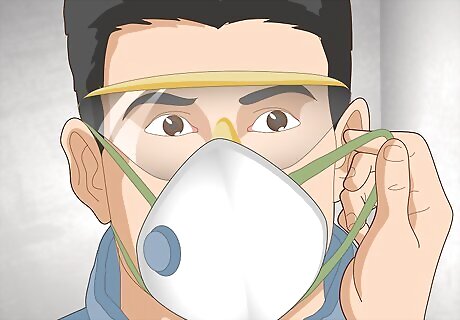
Put on a pair of safety glasses and a face mask. Drilling into concrete creates dust that can irritate your eyes if it gets into them and your sinuses if you breathe it in. Before you begin working, put on a pair of well-fitting safety glasses and cover you nose and mouth with a facemask. You could also tie a scarf or bandana around your mouth and nose to avoid breathing in the concrete dust. You can find safety glasses and face masks at hardware stores, department stores, and by ordering them online.
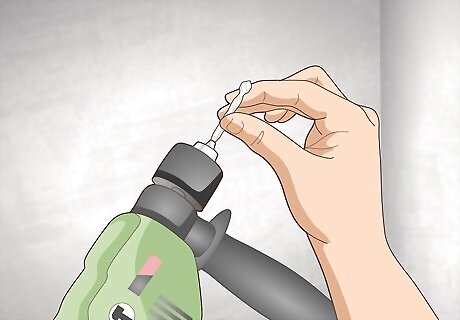
Fit a carbide-tipped masonry bit into a hammer drill. A hammer drill, also known as a percussion or impact drill, is a specialized power tool that’s used to drill into hard surfaces, such as concrete. Insert a carbide-tipped masonry bit into the end of your drill and tighten it so it’s held securely in the jaws. Look for hammer drills and carbide-tipped masonry bits at your local home improvement or hardware store. You can also order them online. Carbide-tipped masonry bits are strong enough to drill into concrete without cracking.Tip: If you don’t have a hammer drill, you can use a standard power drill, but you must use a carbide-tipped masonry bit and it will take much longer to drill into the concrete wall.
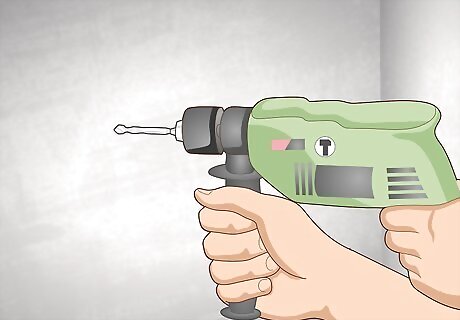
Hold the drill against the wall with both hands. Take a wide stance and plant your feet firmly on the ground so you’re strong and stable. Press the drill bit against the wall where you want to put your nail, hold the drill with both hands, and apply pressure using your body weight so the drill won’t slip or move out of place when you use it.
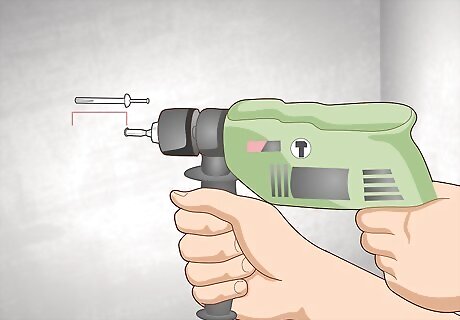
Drill a hole into the wall deep enough to fit your hammer-set anchor. With your drill pressed against the wall, start drilling slowly and bring it up to full speed to create a pilot hole in the wall. Make the hole as deep as the wider bottom section of your hammer-set anchor. If concrete dust builds up in the hole as you’re drilling, remove the drill and blow out the dust before you continue.
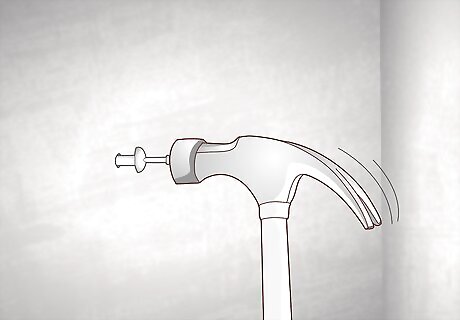
Drive the anchor nail into the hole you drilled with a hammer. Hold the wider bottom section of the hammer-set anchor nail against the hole you drilled and start tapping it into place with a standard hammer. As you drive the anchor into the concrete, the bottom section will expand and hold the nail in place. Continue hammering until the wide section is completely in the wall. Scot Simpson Scot Simpson, Construction Expert If you're attaching stuff to concrete, having the right tools and supplies is key. For nailing, go with a hardened steel nail made specifically for concrete — that way, it can get through the hard surface without bending. You can also pre-drill holes with a hammer drill for the nails, then drive them in with a heavy hammer. Be sure to wear safety goggles to keep debris from flying into your eyes.
Masonry Nails
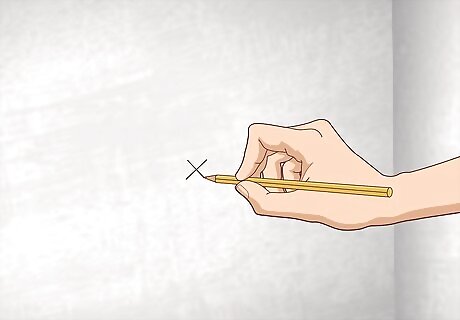
Mark the wall where you want to put a nail with a pencil. Pinpoint the exact spot where you want to put your nail by using a pencil or marker to make a small point on the wall. If you plan to install multiple nails into your wall to hang or install something, check to make sure they’re measured evenly with a ruler or tape measure.
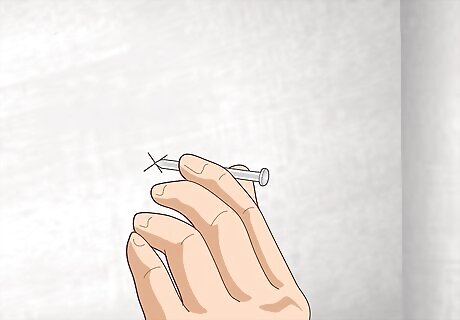
Hold a masonry nail against the concrete wall with your fingers. A masonry nail, also known as a concrete nail, is made of tough steel and designed with fluted shafts that help them drive into concrete without breaking. Place the tip of the masonry nail against the marking you made and hold it steady with your fingers. Look for masonry nails at hardware stores, home improvement stores, department stores, or by ordering them online.
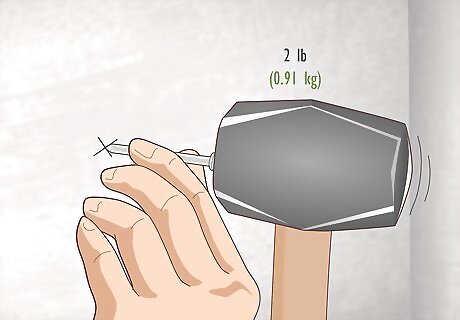
Tap the nail with a 2 lb (0.91 kg) mash hammer to hold it in place. A mash hammer, also known as a masonry hammer, as a double-sided hammer that’s much heavier than standard hammers, making it the best choice to drive nails into concrete. With your nail held in place against the wall, tap the end of it with your hammer to drive the nail just enough so it’s held in place in the wall and you don’t need to hold it with your fingers. A standard hammer won’t be heavy or solid enough to drive the nail into the concrete wall. Look for mash hammers at hardware stores and home improvement stores, or by ordering one online.
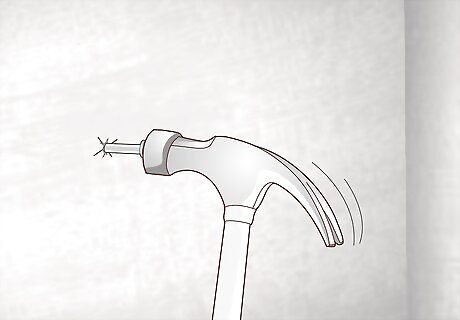
Drive the masonry nail into the concrete wall with the hammer. Use carefully aimed hammer strikes to drive the nail into the concrete wall so you don’t miss and bend the nail or strike the wall and damage it. Continue striking the hammer until the nail is driven in to where you want it. If you’re fastening something to the concrete wall, drive the nail all the way in.Tip: Leave about ⁄2 inch (1.3 cm) of the nail sticking out if you plan to hang something from it.










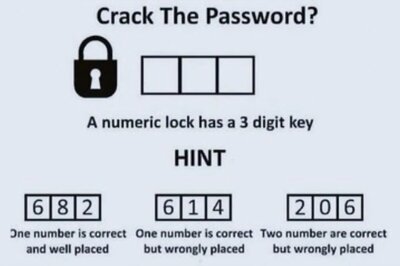







Comments
0 comment